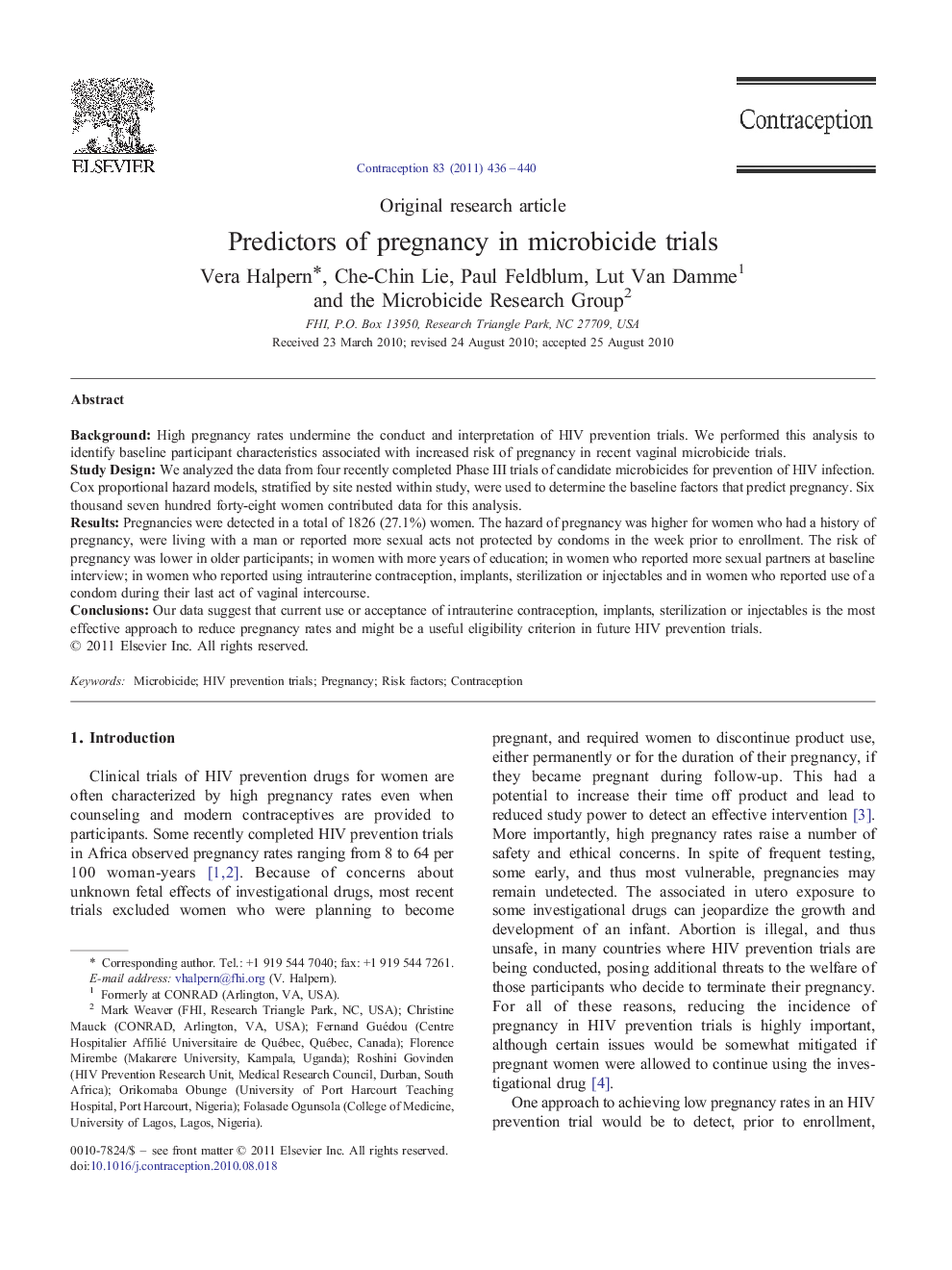| Article ID | Journal | Published Year | Pages | File Type |
|---|---|---|---|---|
| 3914053 | Contraception | 2011 | 5 Pages |
BackgroundHigh pregnancy rates undermine the conduct and interpretation of HIV prevention trials. We performed this analysis to identify baseline participant characteristics associated with increased risk of pregnancy in recent vaginal microbicide trials.Study DesignWe analyzed the data from four recently completed Phase III trials of candidate microbicides for prevention of HIV infection. Cox proportional hazard models, stratified by site nested within study, were used to determine the baseline factors that predict pregnancy. Six thousand seven hundred forty-eight women contributed data for this analysis.ResultsPregnancies were detected in a total of 1826 (27.1%) women. The hazard of pregnancy was higher for women who had a history of pregnancy, were living with a man or reported more sexual acts not protected by condoms in the week prior to enrollment. The risk of pregnancy was lower in older participants; in women with more years of education; in women who reported more sexual partners at baseline interview; in women who reported using intrauterine contraception, implants, sterilization or injectables and in women who reported use of a condom during their last act of vaginal intercourse.ConclusionsOur data suggest that current use or acceptance of intrauterine contraception, implants, sterilization or injectables is the most effective approach to reduce pregnancy rates and might be a useful eligibility criterion in future HIV prevention trials.
